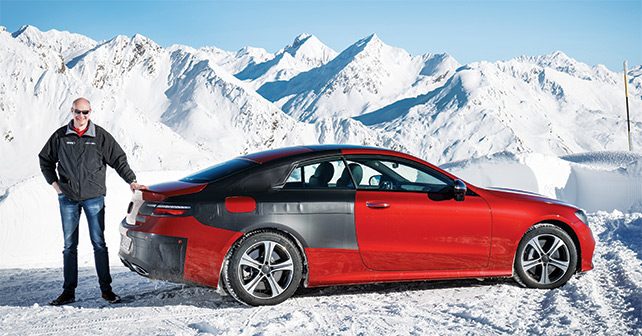
Jens ends 2016 by sampling some pretty impressive future products from Mercedes-Benz, and wonders how the competition will respond in 2017.
2016 has come to a close, and in its last month no carmaker has kept me busier than Mercedes-Benz – with a flurry of new product launches and teasers. The brand’s styling language has been entirely overhauled, and they’ve covered virtually every possible twist in future technology.
The first model under the EQ moniker doesn’t yet stand on a dedicated EV platform. This car, launched in concept form at the Paris auto show, is a heavily tweaked GLC and thus uses the ubiquitous MRA rear-wheel drive platform. Future models will have their own, dedicated electric architecture.
But, getting back to internal combustion for a moment, I went on an extensive ride with AMG chief Tobias Moers in the GT and GT C Roadster from Las Vegas into the Valley of Fire and onwards to a deserted ghost town in the Nevada desert. The desert metropolis of Las Vegas symbolizes excess and glamour, and is in stark contrast with the surrounding landscape. The bizarre rock formations and the grandiose canyons are accessible by beautiful open roads – some of which are rather lightly patrolled. The cars were traveling from the West Coast to the Nissan Proving Grounds near Phoenix, Arizona, which Daimler uses regularly. Las Vegas was en route.
The two variants Moers was kind enough to bring along mark the corner points of the line-up – the ‘entry-level’ GT Roadster, which makes 462 horsepower, and the GT C Roadster, which is rated at a full 558 horsepower. There will be a GT S Roadster, too, rated at 510 horsepower – just like AMG will have a GT C Coupe. Ah, the beauty of the corporate parts bin!
If the roadsters look even more angry that their coupe siblings, that’s because of the new grille – wide at the bottom and inspired by the classic 300 SL Panamericana. It’ll soon appear on coupe versions of the AMG GT as well. The GT C Roadster, when compared with the GT Roadster, sports a wider track, a wider body, and far reaching chassis modifications. In fact, its performance is close to the 585-horsepower GT R Coupe.
In this development stadium, Moers is checking all functions of the roadster, their integration, and the overall harmony of the vehicle. It’s a few more months until the driving launch, and customers won’t get their cars before spring. The engineers are still ironing out the details. Indeed, the trunk lid doesn’t fit well, and the steering isn’t calibrated for series production yet – and Moers noticed one or two more issues that he wouldn’t tell us about.
A few weeks later, I got to drive the GT R Coupe in series production form. Until a possible Black Series model appears, it stands at the top of the GT line. Wider, stiffer and more precise than any other GT, not to mention more powerful, it delivers fearsome power and an unbelievably aggressive soundtrack. And it’s the first coupe to share the new grille with the roadster. If this formidable car comes to the Indian market, it’ll certainly give the Audi R8 V10 Plus a run for its money.
While the GT derivatives are brutally aggressive and powerful, I’ve grown similarly impressed with the new E-Class Coupe – which I experienced during a second prototype drive in the Ötztal mountains at the Austrian-Italian border. With its almost Italian style, designed with an unmistakable sense for proportions, frameless windows and delicately slim, horizontal taillights, it might be the most beautiful coupe on the market when it’s launched this spring. “If you think you cannot take off another line, go ahead and do it anyway,” Daimler chief designer Gorden Wagener once told me. The E-Class Coupe has certainly put that theory into practice.
And this renaissance in design hints at a larger resurgence within Daimler-Benz as a whole. It’ll certainly be interesting to see how the competition responds in 2017, and beyond...























Write your Comment